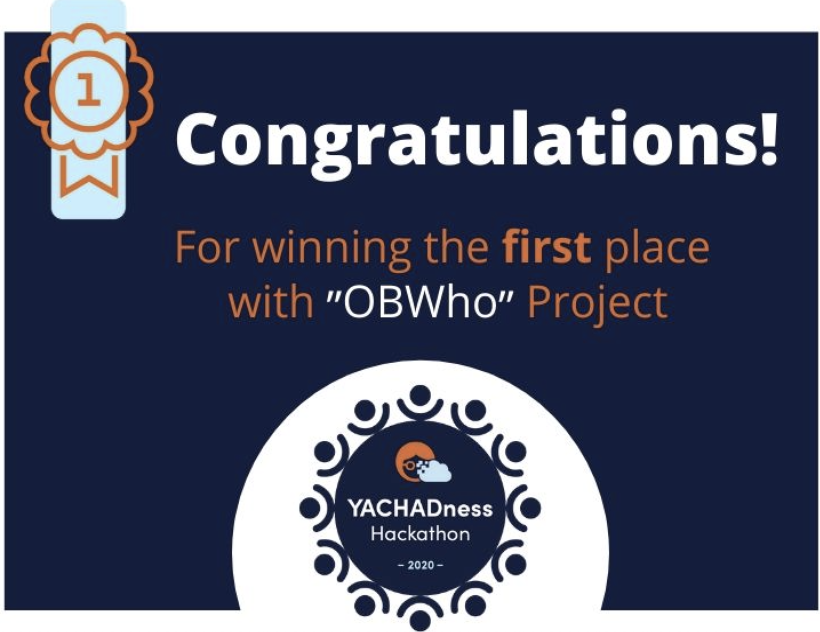
Background
2020 was a unique year when most of the industries in the world were forced to work remotely for a long period of time due to the COVID-19 pandemic. Besides health and employment concerns, staying at home for a long period of time is not natural for the human race as we are communicative beings by nature, causing many challenges, where one of the biggest challenges is how to maintain the social fabric. This is true in general and in particular for companies that most or all of its employees are working from home, and is becoming more significant as you go up in the organization structure, from team level to group level and above.
As managers, we were very concerned about finding ways to maintain the social connection between teams and had several discussions about it. During one of those discussions we remembered that in a different life period before the COVID-19 pandemic, we planned to have a Hackathon and we even started working on it but as usual, life has other plans. So, why not do the Hackathon we planned on doing just a little different? Besides the remote limitation, Hackathon is exactly what we need in order to solve this “disconnection” challenge.
As we already had experience on how to perform a “regular” Hackathon, we knew what are the basic things that needed to be done, but as this will be the first time we will do it remotely we understood that things need to be done a little differently, especially on the administrative side. As a rule, the participation in our Hackathons is not mandatory and the people’s engagement depends on the communication they receive. This is true for regular Hackathons and even more relevant for a remote Hackathon.
In this post I will describe the actions we took as the preparation and during the Hackathon itself, which led to a successful event. You can use it as a useful source of tips in case you plan to perform your own remote Hackathon.
Preparation
Most of the preparations for a remote Hackathon are the same as for a regular Hackathon, but there need to do some adjustments due to the nature of working remotely:
Choose the theme
The Hackathon’s theme define the Hackathon’s projects, so first thing you need to do is to define the Hackathon theme, in our case we choose the theme YACHADNESS, which is taken from the Hebrew word YACHAD which means TOGETHER, so YACHADNESS=TOGETHERNESS. We chose this theme since the target of this Hackathon was to make the people working together in order to solve the lack of communication during the WFH period, this was the reason we did this Hackathon and it was more important for us to focus on this aspect instead of any other technological subject. Due to the selected theme, there were no boundaries for the projects, anything is welcome and we let the people be as free as they want with their ideas.
Set timeline
When planning the Hackthon’s timeline need to take into account the following millstones:
- Define the Hackathon’s projects
- Present the selected projects
- Establish the projects’ teams, each one can choose to assign himself to his favorite project
- Define the winning KPIs
- Establish the judges team
- The Hackathon itself
Communication
As said before, it is true for regular Hacktons and even more for a remote one. Since all communication is done by mails and zoom meetings, you need to make sure that people are informed about the current status: where are we standing regarding the timeline and what are the next steps. In addition, due to the WFH situation, you need to invest more on the people’s engagement, this can be done by sending relevant mails, mentioning it during meetings and setting dedicated meetings for each milestone in the timeline.
Define the schedule
In most regular Hackathons, the people are gathered together in one place and are working in groups on their projects. In a remote Hackathon the people are working from their Homes, so the schedule needs to be prepared in advance, known to all and take into account all the limitations while working from home (kids, availability etc.). In our schedule we also added fun activities and we also arranged some giveaway that was delivered to the people’s houses during the Hackathon itself.

Working area
There are some benefits for working remotely, instead of arranging meeting rooms for the project teams (this is one of/most challenging task in a regular Hackathon), you need to create a dedicated zoom meeting and slack channel for each team to be used for all the team communication during the Hackathon period. In this way everyone could jump into each project and could say hi or to check how things are progressing, it was used also by our judges to do their periodic visits.
The Hackathon
The Hackathon itself was planned to take 2 days, since we all worked remotely we created a detailed schedule with check-in meetings and with lots of fun activities like Yoga session, Tabata workout and beer breaks, we wanted that those 2 days will be used also for fun in addition to the innovation work that was done. All was done in order to serve our initial plan, to bring the people closer even while working remotely.
So after a short kickoff session, each team started to work on their project (through their zoom & slack channel). We followed the schedule with dedicated shared meetings until we reached the final meeting that was the projects’ presentation, each team was given 10 minutes to present their project and in the end the winning project was declared, the winning was according to the results of a public voting combined with the judges decision.
And in case you wonder, the winning project was OBWho – a slack bot that can be give you a place to ask who is the owner of any internal system, the main logic of this project is a crawler that scans all our slack channels and according to that creates some mapping by using a machine learning algorithm that map the owners based on tokens that were found in each channel.

Conclusion
All the hard work that was done proved itself, we had a Successful Hackathon with results that passed our expectations. The participation ratio was very high, we had 6 great projects and the distance limitation did not influence the people who were committed and engaged as in a regular Hackathon, beside that we had lots of fun with all the fun breaks and activities.
But most importantly we achieved our initial goal, to bring people together for doing innovative work combined with fun despite the distance limitation, for 2 days we were all YACHAD again.
In order to summaries all in one place, in the below list you can find the additional actions that need to be taken into consideration when planning a remote Hackathon:
- Lots of communication
- Create slack channels for each project
- Create zoom rooms for each project
- Again, lots of communication
- Define detailed schedule with sync zoom meetings
- Have fun breaks through zoom
- Send some giveaways to the people’s houses
- In case it wasn’t clear unto now, lots of communication
- Collect feedback through survey
For us, this remote Hackathon made the impact we wanted and we achieved exactly what we planned and more, I hope that you can learn from our experience in case you plan to have your own successful remote Hackathon.